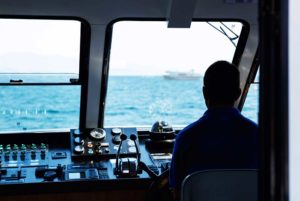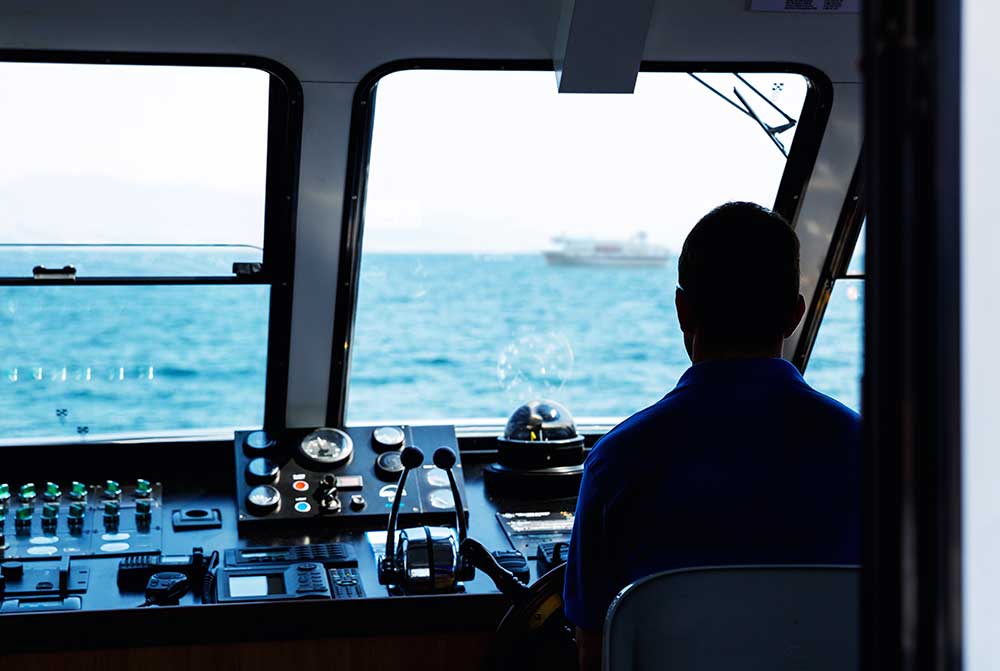Disclaimer: The information on our website is provided for general information purposes only. We make no representations or warranties of any kind, express or implied, about the completeness, accuracy, reliability, suitability or availability with respect to the website or the information contained on our website for any purpose. Any reliance on such information is therefore strictly at your own risk and we are not liable for any damages or losses arising out of or resulting from your reliance on any information contained on our website.
A water transportation worker is sometimes called a merchant marine and they can hold a variety of other titles. For example, titles may include captains, mates, deck officers, mariners, sailors, marine oilers, ship engineers, deckhands, and motorboat operators. All of these positions maintain and operate vessels and travel to and from domestic ports along the coasts, the country’s inland waterways, and could also travel to foreign country ports. Watch a video to learn what transportation workers do.
How to Become a Water Transportation Worker

Some water transportation workers hold a bachelor’s degree from a merchant marine academy to gain their Merchant Marine Credential (MMC). This provides an endorsement to become a third mate or third assistant engineer. Additionally, graduates can choose to receive a commission as an ensign in the U.S. Naval Reserve, U.S.Coast Guard, or Merchant Marine Reserve. To learn more, visit the United States Coast Guard website.
Non-officers do not normally require a degree. Instead, they receive on-the-job training for 6 months to a year depending on the size and type of ship they work on. All mariners working on ships with U.S. Flags require a Transportation Worker Identification Credential (TWIC) from the Transportation Security Administration that ensures the employee is a U.S. Citizen or permanent resident. It also demonstrates the employee has passed security screening. This TWIC is renewed every 5 years.
Mariners working on ships that are traveling on the open ocean require the Standards of Training and Watch Keeping Certification (STWC) endorsement that must be renewed every 5 years. Mariners who work on inland waterways do not require the STWC endorsement. Most Mariners need to have a Merchant Marine Credential (MMC). Entry-level employees do not have to pass a written exam. However, some must pass physical, vision, and hearing tests and all must pass a drug screening test. MMC is renewed every 5 years.
Job Description of Water Transportation Worker
The duties of a water transportation worker vary according to the size and type of ship or vessel they work on. However, they typically maintain and operate non-military vessels such as large deep-sea container ships, bulk carriers, large and small tankers, supply ships, tug boats, salvage vessels, cruise ships, or deep-sea merchant marine ships. They follow their vessel’s strict chain of command and ensure the safety of the cargo and passengers on board.
Captains and mates are responsible to supervise workers, manage maintenance, keep records of the budget, and various other duties. Pilots guide ships in harbors, confined waterways, and rivers. Sailors or deckhands operate and maintain the vessel and deck equipment among other duties. Ship engineers operate and maintain a vessels’ propulsion system.
Larger vessels typically carry a chief engineer who has command of the engine room and its crew as well as a first, second, and third assistant engineer. Marine oilers work in the engine room, assisting the engineers to keep the propulsion system in working order. Motorboat operators run small, motor-driven boats that carry only a few passengers and provide a variety of services, like fishing charters or tours. Water transportation workers are oftentimes gone for long periods of time, work in all types of weather conditions, and have long working hours. There is a faster than average growth in this industry, especially for our domestic waterways.
Article Citations
Bureau of Labor Statistics, U.S. Department of Labor, Occupational Outlook Handbook, Water Transportation Workers.
The career video is in the public domain from the U. S. Department of Labor, Employment and Training Administration.

